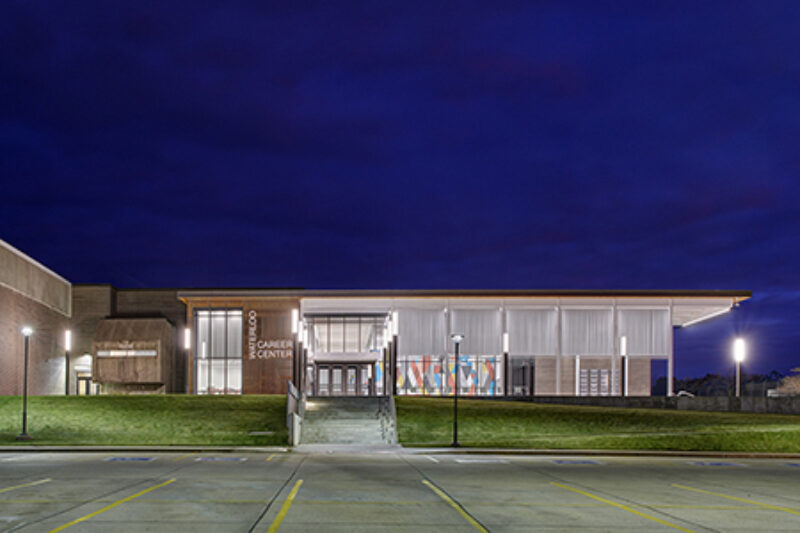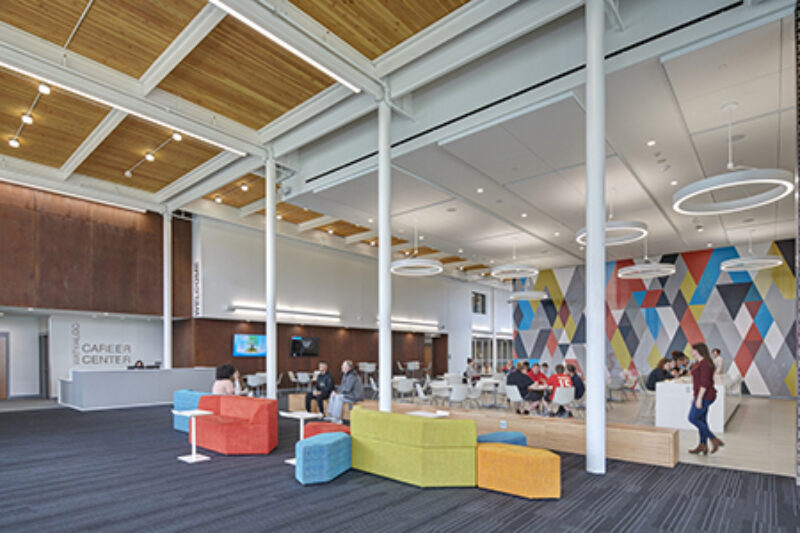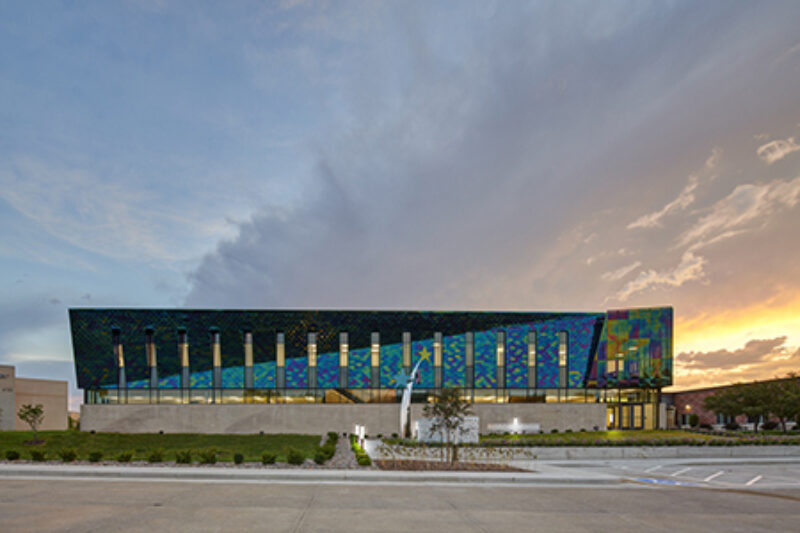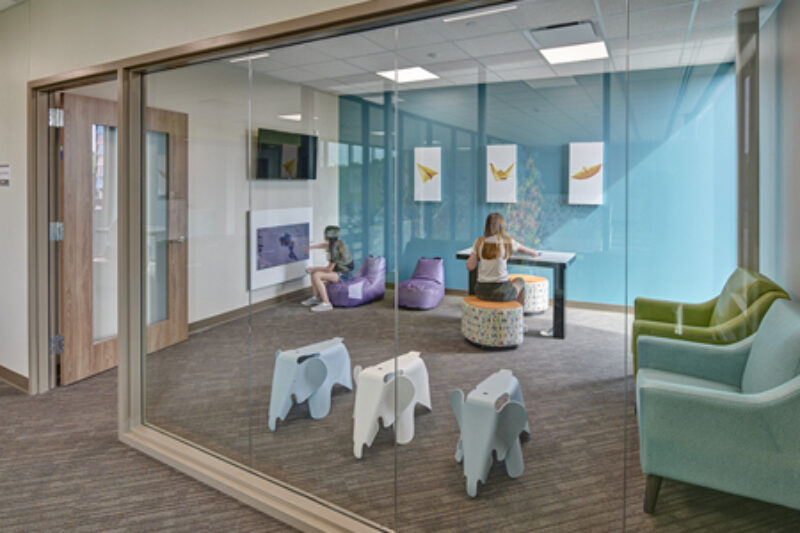Blank Children’s Star & Development Center
The Developmental Center offers specialized services to children who have been victims of abuse, exposed to drugs, experience in the foster care system, as well as diagnosis and treatment for children with developmental, behavioral, and physical conditions. The overall design intent of the project was to create environments that make children feel safe, comfortable, and welcome while providing a colorful on-brand experience.
The exterior of the building is clad with iridescent stainless steel panels to provide an ever-changing colorful exterior appealing to children’s natural curiosity and tendency to be drawn to brighter colors. All the color is achieved through the special properties of the material and is merely an illusion created by light bending through a clear corrosion layer much like a prism. The inverse battered and angled walls on the exterior help highlight the color shifting properties of the cladding while also playing off the Center’s “star” logo, which is present in the perforated metal panels directly above the entry doors.
Inside, a double height volume with a feature stairway separates the two departments of the center. Artwork and finishes are muted, but carefully curated to continue the colorful folded origami experience from outside to inside. With the patients often being at-risk youth, unobtrusive check points (sub-waiting rooms) control the flow of traffic and allow privacy for families while they wait. Additional design decisions focused on patient needs include quiet rooms for children sensitive to sounds and activity, curved corridor walls to foreshorten the sensory experience, wall-mounted interactive activities for children’s use while waiting, and adjustable color temperature exam room lights to maximize patient comfort for children on the autism spectrum.
We’re excited to see what the future holds for the users of these facilities and what kind of impact the programs have on the youth of Iowa. From adding new training programs to being able to help more at-risk children, both of these clients continue to show us how bright the future can be.



